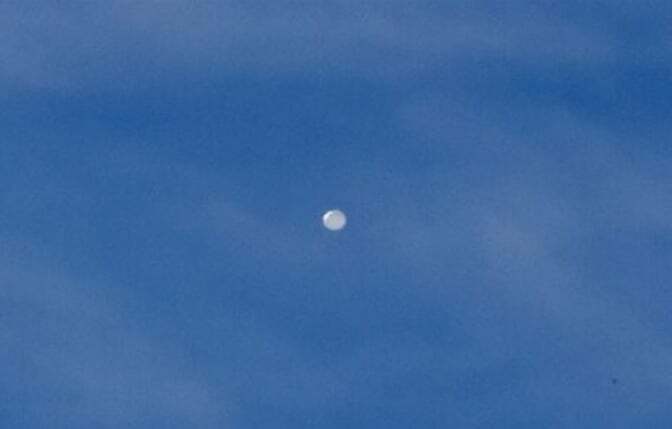
The balloons moved slowly across the blue sky on a quiet and sunny winter’s day when missiles suddenly streaked in and struck them down.
The two white balloons over a village near Kyiv are among six which the Ukrainian military say they have taken down in the last few days amid a marked increase in Russian air activity. It comes as reports emerge that the Kremlin is massing warplanes across the border as the first anniversary of the war approaches.
The balloons are the latest in a wave of Russian attempts to gather intelligence, and to both deplete Ukrainian air defences and impede the use of warplanes.
Follow the latest in our live blog here
Villagers watched as the debris floated down on surrounding fields: The Independent, present in the area when recovery was taking place, was requested not to publicise the exact location for security reasons. Nato analysts, along with the Ukrainians, want to examine the wreckage, we have been told.
Some of the balloons, according to military officials, have filming capacity as well as reflectors to deflect radio waves to “disorient” missiles which use radar to find targets. Russia has used reflectors to try and protect valuable assets like the Kerch Bridge, which connects Russia to Crimea, but it is not known to have used them previously on balloons.
Another aim of launching the balloons is to locate Ukrainian air defence systems which can later be attacked, say officials. They are also aimed to get Ukraine to use up its stocks of anti-aircraft missiles and ammunition in advance of air strikes.
Ukrainian and some Western security officials have reported large numbers of Russian aircraft arriving at bases near Ukraine in possible preparation for a coming wide-ranging offensive.
Speaking at a Nato meeting in Brussels earlier this week, the US defence secretary Lloyd Austin was unsure whether the Kremlin was planning a “massive aerial attack”. He added, however, that “Russia has a substantial number of aircraft in its inventory and a lot of capability left” and “we need to do everything that we can” to hasten air defences to Ukraine.

Balloons flying at high altitude, on air currents, can be difficult to detect for radar systems which are generally designed for tracking fast moving air objects like warplanes and missiles.
Yuriy Ihnat, a spokesperson for the Ukrainian Air Force, said the Russians “will exploit this when the weather is in their favour; the weather was blowing our way today”. He added that large balloons have also been seen in the eastern Dnipropetrovsk region.
Mr Ihnat said that Moscow could be using the balloons to preserve its number of unmanned reconnaissance drones. “Reconnaissance drones like the Orlan-10 are now being used more sparingly and they thought ‘why don’t we use these balloons?’ So they are using them,” he said.
The Kyiv City Military Administration (KMVA) said of the balloons: “These objects could carry corner reflectors and some intelligence equipment. Air defence equipment worked on all air targets – most of the probes were shot down.”
The spate of balloons over Ukraine comes after the US Air Force F-16 jets shot down a Chinese balloon over North America, along with three further “objects” in the days following. Beijing has maintained that the balloon was merely aimed at studying weather, the Pentagon insists that they were built for surveillance.
Moldova briefly closed its airspace because of a balloon that entered its airspace on Tuesday near the Ukrainian border. The government in Chisinau said it was doing so to ensure the security of passenger flights. Romanian jets were also scrambled this week after balloon sightings in its skies.
The Nato secretary general, Jens Stoltenberg, has warned that Russia and China were increasing their intelligence and surveillance activities, including with the use of balloons. “This highlights the importance of our vigilance, our increased presence, and also that we see the stepping up of how we share intelligence and how we monitor and protect our airspace,” he said.







